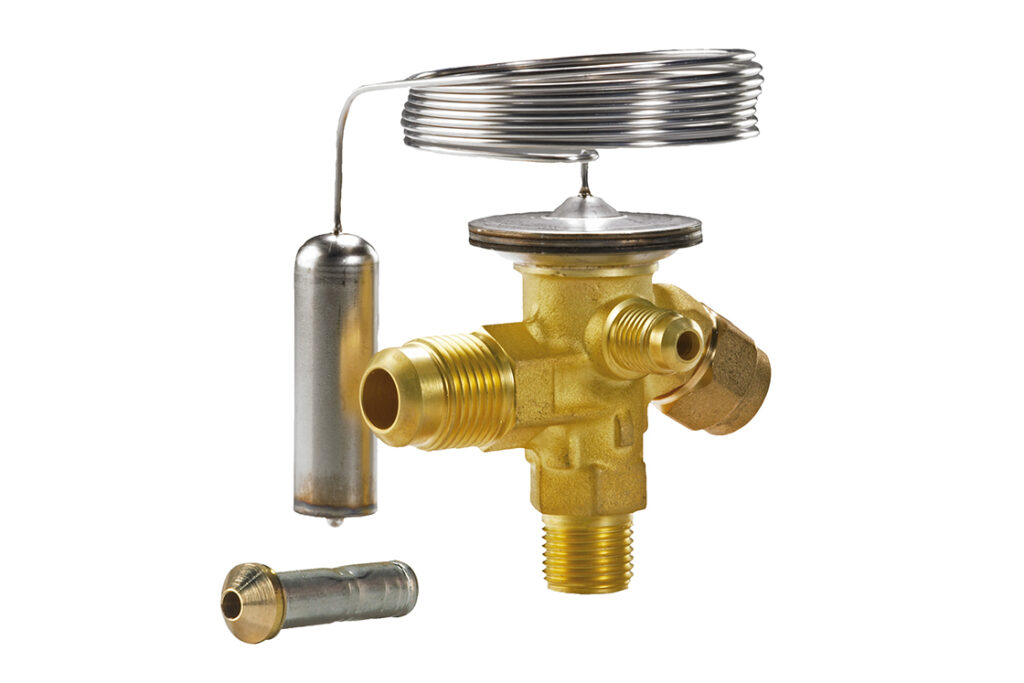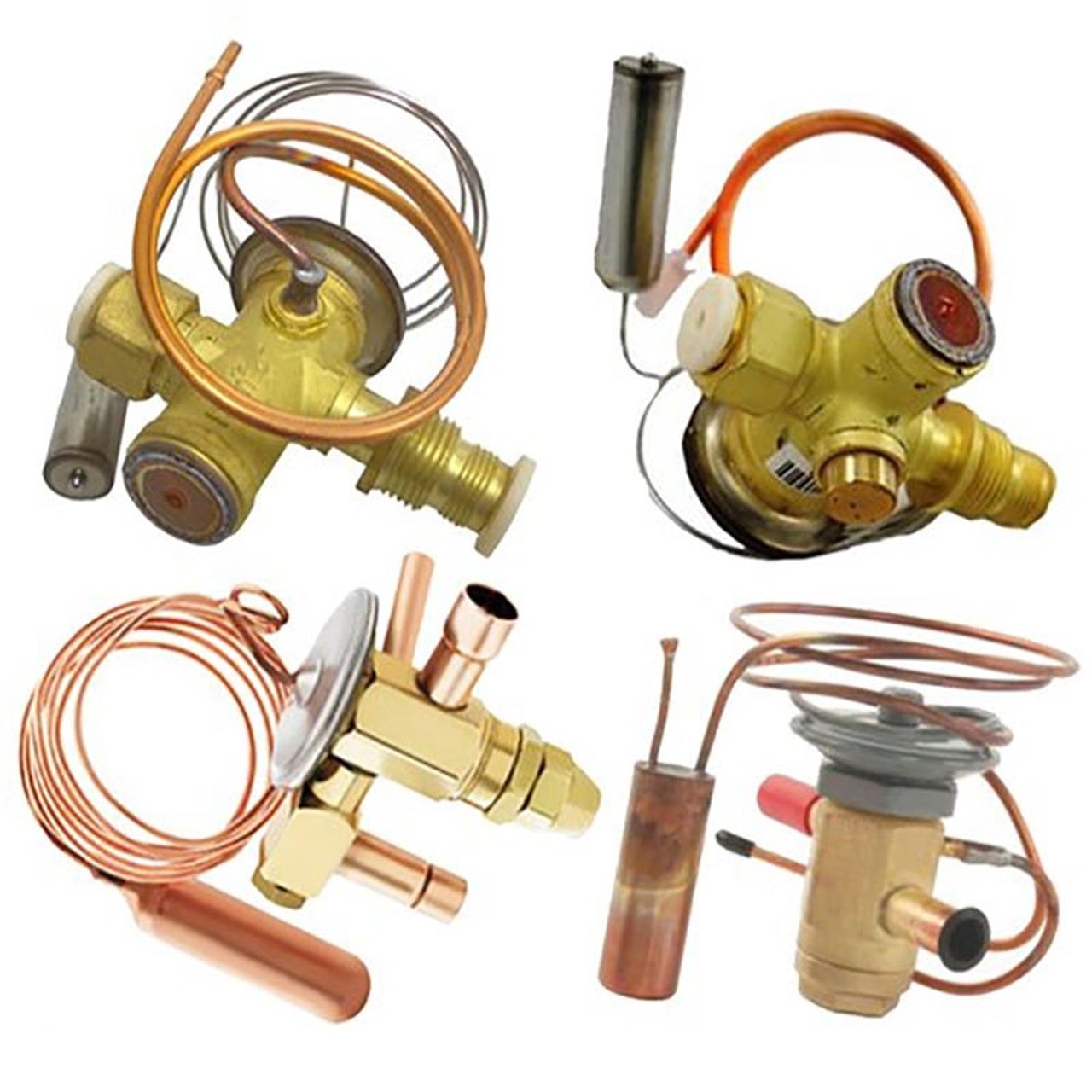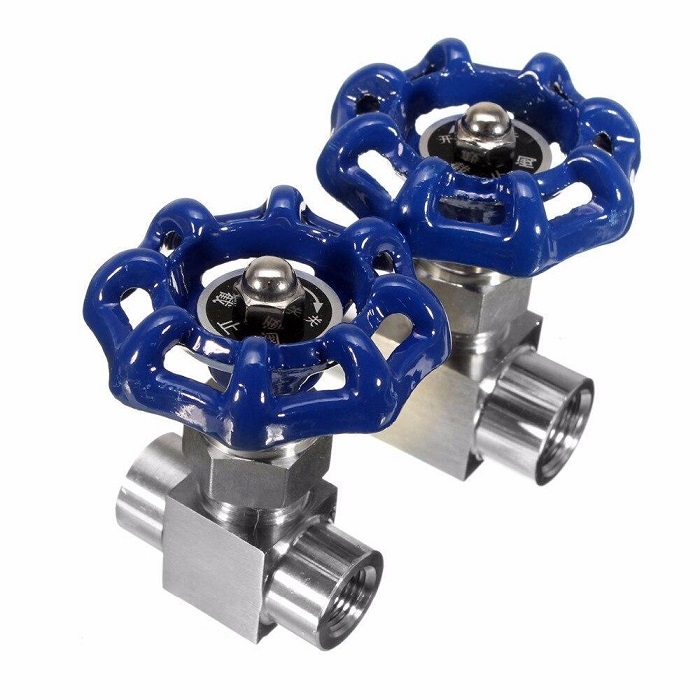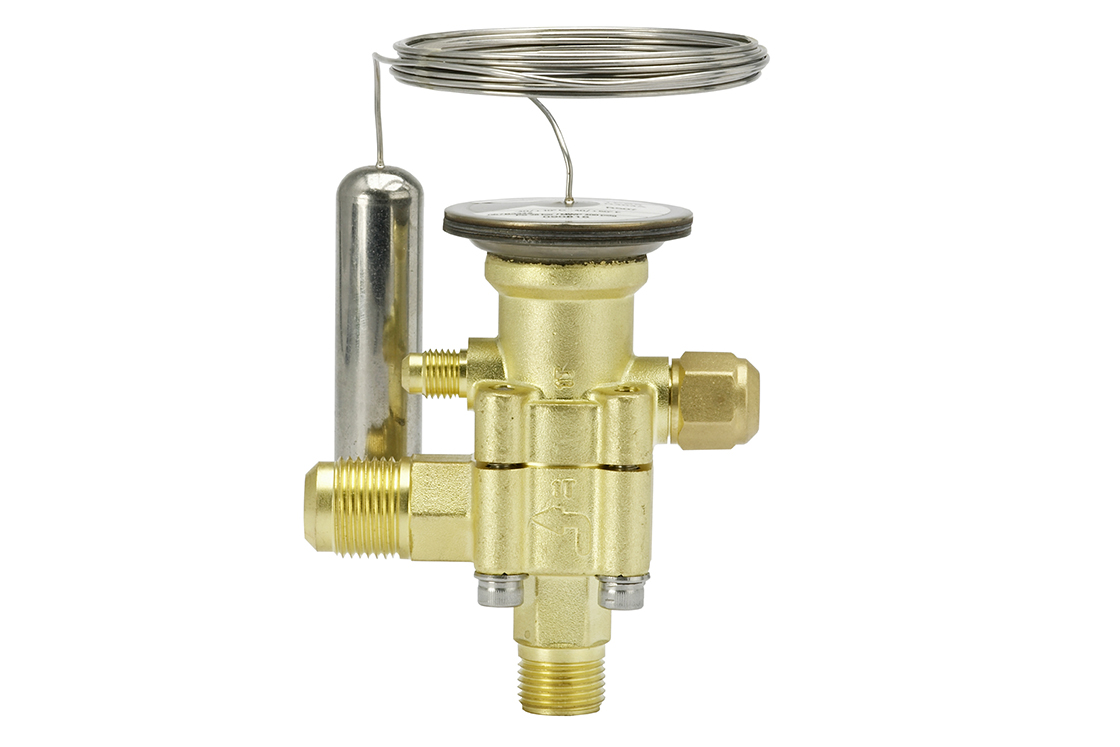Thermal Expansion Valves: Everything You Need To Know


(adsbygoogle = window.adsbygoogle || []).push({});
Table of Contents
As you may know, several types of expansion valves are used to allow expansion or change of state from a liquid to a vapor in the evaporator. This article will take a closer look at Thermal Expansion Valves, which are an important piece of equipment in the HVAC industry. Follow this new blog in Linquip to find out what a Thermal expansion valve is and how it works.
⇒ View a Comprehensive List of Valves and Their Suppliers ⇐

What Are Thermal Expansion Valves?
Thermal expansion valves, or thermostatic expansion valves (often abbreviated as TEV, TXV, or TX valve), are the refrigeration and air conditioning throttling device that controls the amount of refrigerant liquid injected into a system’s evaporator (based on the evaporator outlet temperature and pressure) called the superheat.
Thermal Expansion Valves Main Components
Inside the Thermal expansion valve, you will typically find the following main components:
- The valve body: It holds the components and has an orifice inside to restrict the flow of refrigerant
- The diaphragm: It is a strong, thin flexible material, typically metal, which can flex to apply pressure to the pin.
- The pin, or needle: It moves up and down to vary the size of the opening within the orifice to control the refrigerant flow.
- The spring: It counteracts the force of the pin.
- The sensing bulb and capillary line: They measure the refrigerant temperature, at the evaporator exit, and react to causes the valve to open or close.

Thermal Expansion Valves Working Principle
- When the load on the evaporator increases, it causes the liquid refrigerant to boil faster in the evaporator coil. Since the feeler bulb is installed on the suction line, it is at the same temperature as the refrigerant at that point. So the temperature of the bulb increases due to the early vaporization of refrigerant.
- Thus the feeler bulb pressure increases and gets transmitted through the capillary tube to the diaphragm. The diaphragm moves downwards, opening the valve to admit more liquid refrigerant into the evaporator.
- This continues till pressure equilibrium on the diaphragm is reached, at which feeler bulb pressure acting at top of the diaphragm is balanced by spring and evaporator pressure acting at bottom of the diaphragm.
- When the evaporator load decreases, less liquid refrigerant evaporates in the coil, and the excess liquid flows towards the outlet. This cools the feeler bulb and its pressure and temperature decrease.
- This pressure makes the diaphragm move upward, reducing the valve opening and in turn decreasing refrigerant flow to the evaporator. This causes a decrease in evaporator pressure and again continues till diaphragm pressure equilibrium is reached.
See All Ball Valve for Sale
Thermal Expansion Valve Function
The thermostatic expansion valve performs the following functions:
1) Reduce the pressure of the refrigerant: The first and foremost function of the thermostatic expansion valve is to reduce the pressure of the refrigerant from the condenser pressure to the evaporator pressure. In the condenser, the refrigerant has a very high pressure. The thermostatic expansion valve has a constriction or orifice due to which the pressure of the refrigerant passing through it drops down suddenly to the level of the evaporator pressure. Due to this, the temperature of the refrigerant also drops down suddenly and it produces a cooling effect inside the evaporator.
2) Keep the evaporator active: The thermostatic expansion valve allows the flow of the refrigerant as per the cooling load inside it. At higher loads, the flow of the refrigerant is increased and at the lower loads, the flow is reduced. It won’t happen that the load on the evaporator is high and the flow of the refrigerant is low thereby reducing the capacity of the evaporator. The thermostatic expansion valve allows the evaporator to run as per the requirements and there won’t be any waste of the capacity of the evaporator. The TEV constantly modulates the flow to maintain the superheat for which it has been adjusted.
3) Allow the flow of the refrigerant as per the requirements: This is another important function of the thermostatic expansion valve. It allows the flow of the refrigerant to the evaporator as per the load on it. This prevents the flooding of the liquid refrigerant to the compressor and efficient working of the evaporator and the compressor and the whole refrigeration plant.

Read More on Linquip
- Types of Expansion Valves: an Easy to Understand Guide
- What is Automatic Expansion Valve: A Basic Guide
- The 6 Best Tubeless Valve Stems in 2021
- The 10 Best Sprinkler Valves in 2021
- Valve Suppliers and Companies
- Control Valve Suppliers and Companies
- Ball Valve Suppliers and Companies
Thermal Expansion Valve Advantages
- Adaptable Refrigerant Flow
- Keeps the Evaporator Active and in Optimal Performance
- Higher Power Efficiency
- Eliminates Risk of Compressor Breakdown
- Handles Variation in Refrigerant Charge
- Better Temperature Control
The advantages of Thermal expansion valves are as follows.
See All Actuator Valve for Sale
-
Adaptable Refrigerant Flow
The thermal expansion valve adjusts the refrigerant flow into the evaporator to suit the heat load in the enclosure. This allows for an immediate response to an increase or decrease in the heat dissipated by your electrical equipment. Any temperature fluctuations in the enclosure will be immediately addressed.
-
Keeps the Evaporator Active and in Optimal Performance
Thermal expansion valves allow the evaporator to be active during the cooling process. By constantly modulating the refrigerant flow for the adjusted superheat, the valve ensures that the evaporator performs optimally.
-
Higher Power Efficiency
The thermal expansion valve enables the enclosure air conditioner to operate at optimum capacity to handle the heat load. It can work at higher capacities for an increased heat load.
-
Eliminates Risk of Compressor Breakdown
Thermal expansion valves ensure complete vaporization of liquid refrigerant in the evaporator. This eliminates liquid slugging or the risk of liquid refrigerant particles reaching the compressor, which could be detrimental to its normal operation.
-
Handles Variation in Refrigerant Charge
The amount of refrigerant in the cooling loop is a critical parameter that could impact the performance of an enclosure air conditioner, especially if it has a passive expansion device like a capillary tube. Thermal expansion valves are more tolerant to variation in refrigerant charge; since they adapt the refrigerant flow to match the heat load.
-
Better Temperature Control
The ability of a thermal expansion valve to control the refrigerant flow helps in controlling the temperature of the enclosure in a much smaller range. Capillary tubes typically allow a constant flow of refrigerant that makes immediate response to changing heat loads difficult. Since thermal expansion valves are active devices, they can keep the enclosure temperature much closer to the setpoint temperature than passive devices do. They also have a lower time constant needed for achieving the desired temperature in case of a sudden increase in heat load.
Read More on Linquip
- Butterfly Valve Suppliers and Companies
- Check Valve Suppliers and Companies
- What is Actuator Valve
- What is Air release valve
- What is Angle Valve
- What is Ball Valve
- What is Bleeder Valve
- What is Butterfly Valve
Thermal Expansion Valve Application
The thermal expansion valve is used in systems of higher capacities such as industrial refrigeration plants, high-capacity split air conditioners, packaged air conditioners, central air conditioners, and many other systems.
So, there you have a detailed description of the Thermal Expansion Valves, their working principle and also their advantages. If you enjoyed this article in Linquip, let us know by leaving a reply in the comment section. Is there any question we can help you with? Feel free to sign up on our website to get the most professional advice from our experts.
Read More on Linquip
- Valve Manufacturers
- Needle Valve Manufacturers
- Regulating & Pressure Reducing Valve Manufacturers
- Solenoid Valve Manufacturers
- Angle Valve Manufacturers
Buy Equipment or Ask for a Service
By using Linquip RFQ Service, you can expect to receive quotations from various suppliers across multiple industries and regions.
Click Here to Request a Quotation From Suppliers and Service Providers
